Best Office Plants
- February 8, 2024
- 0 comment
In the hustle and bustle of the modern workplace, integrating a touch of nature can significantly enhance the atmosphere, productivity, and overall well-being of employees. Office plants not only add aesthetic appeal but also contribute to better air quality, reduced stress levels, and increased focus. With a plethora of options available, selecting the right plants for your office space can seem daunting. To simplify the process, here are ten of the best office plants that are easy to care for and offer numerous benefits:
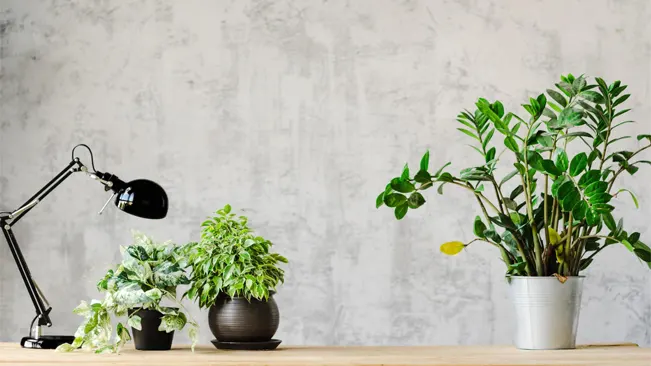
Benefits of Plants in the Office
| Description | |
|---|---|
| Improved Air Quality | Plants help remove pollutants and toxins such as formaldehyde, benzene, and carbon dioxide, leading to cleaner, healthier air for employees to breathe. |
| Increased Productivity | Studies have shown that the presence of plants in the workplace can enhance concentration, productivity, and creativity, leading to improved overall performance. |
| Reduced Stress and Anxiety | The presence of greenery has been linked to reduced stress levels and feelings of calmness, helping employees manage stress and anxiety more effectively. |
| Enhanced Mood and Well-being | Plants contribute to a more positive and uplifting atmosphere in the office, improving mood and overall well-being among employees. |
| Noise Reduction | Some plants can help absorb sound and reduce background noise levels in the office, creating a quieter and more peaceful work environment. |
| Increased Focus and Attention | Greenery in the workplace has been shown to increase focus and attention span, leading to higher levels of productivity and task performance. |
| Improved Morale | Creating a visually appealing and welcoming environment with plants can boost employee morale and satisfaction, fostering a more positive work culture. |
| Temperature Regulation | Plants release moisture through a process called transpiration, which can help regulate humidity levels and create a more comfortable indoor climate for employees. |
| Aesthetic Enhancement | Plants add visual interest and aesthetic appeal to the office space, making it more inviting and pleasant for employees and visitors alike. |
| Health Benefits | In addition to improving air quality, plants have been associated with various health benefits such as reduced headaches, fatigue, and respiratory issues. |
Best Choice of Office Plants
Snake Plant (Sansevieria Trifasciata)
Renowned for its durability and air-purifying qualities, the Snake Plant is an excellent choice for busy offices. It thrives in low light conditions and requires minimal maintenance, making it perfect for beginners.
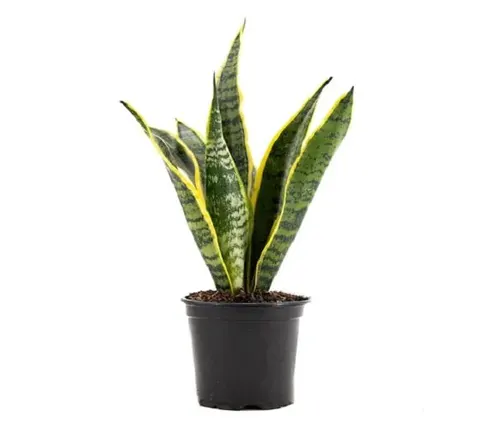
Spider Plant (Chlorophytum Comosum)
With its striking arching foliage and ability to thrive in various light conditions, the Spider Plant is a popular choice for offices. It effectively removes toxins from the air and is safe for pets, adding an extra layer of appeal.
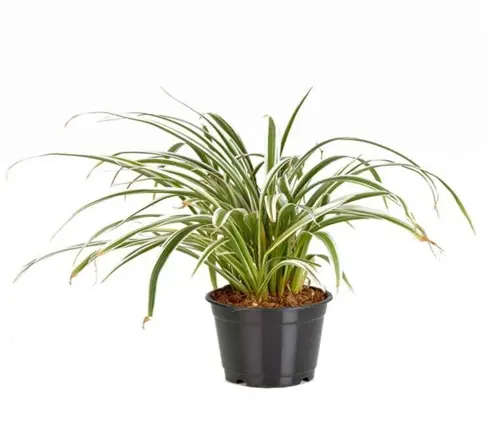
ZZ Plant (Zamioculcas Zamiifolia)
The ZZ Plant is virtually indestructible, making it ideal for offices with minimal natural light and irregular watering schedules. Its glossy, dark green leaves add a touch of elegance to any workspace while improving air quality.
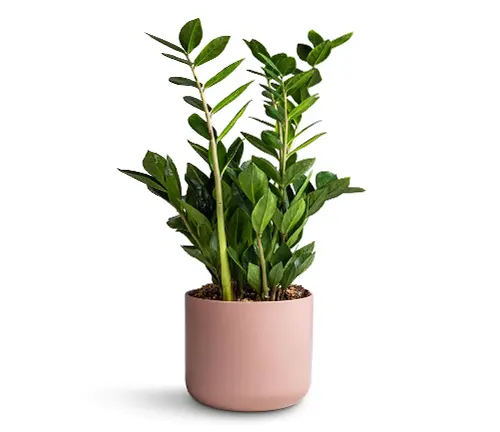
Peace Lily (Spathiphyllum)
Known for its beautiful white blooms and air-purifying properties, the Peace Lily is a versatile plant that thrives in low to medium light conditions. It also helps to regulate humidity levels, creating a more comfortable environment for employees.
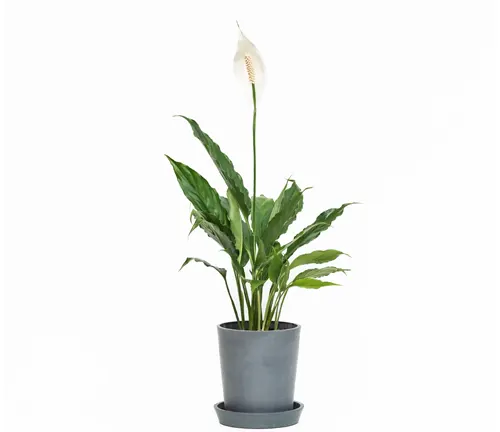
Pothos (Epipremnum Aureum)
Pothos, also known as Devil’s Ivy, is prized for its trailing vines and ability to thrive in low light. It requires minimal care and can tolerate irregular watering, making it an excellent choice for busy offices.
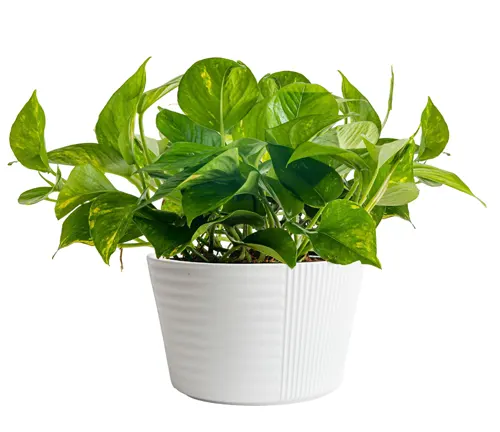
Rubber Plant (Ficus Elastica)
With its large, glossy leaves, the Rubber Plant adds a bold statement to any office space. It thrives in bright, indirect light and helps to remove toxins such as formaldehyde from the air, promoting a healthier work environment.

Philodendron (Philodendron spp.)
Philodendrons come in various shapes and sizes, making them versatile additions to any office. They are easy to care for and thrive in low to medium light conditions, making them perfect for cubicles or desks.
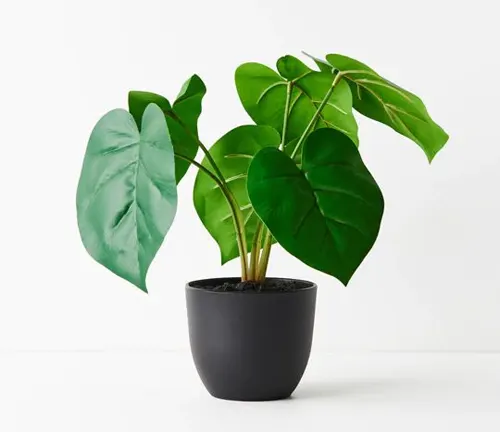
Boston Fern (Nephrolepis Exaltata)
Renowned for its graceful fronds and air-purifying properties, the Boston Fern adds a touch of elegance to any office space. It prefers indirect light and high humidity, making it an excellent choice for well-lit areas with adequate moisture.
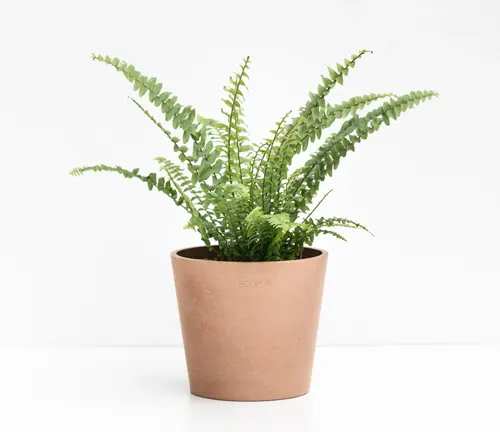
Aloe Vera (Aloe Barbadensis Miller)
Not only does Aloe Vera possess medicinal properties, but it also serves as a low-maintenance office plant. It thrives in bright, indirect light and requires minimal watering, making it perfect for forgetful or busy employees.
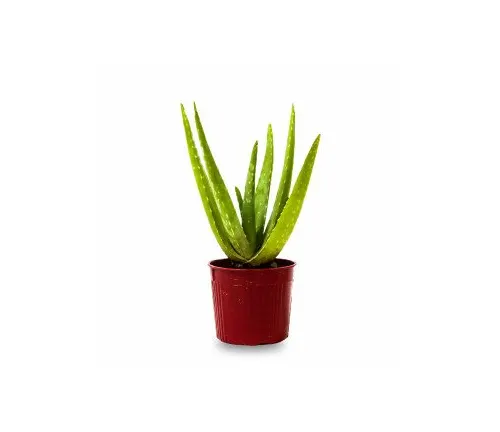
English Ivy (Hedera Helix)
English Ivy is a classic choice for offices due to its ability to purify the air and its trailing vines, which add visual interest. It prefers bright, indirect light and regular watering, making it suitable for a wide range of office environments.
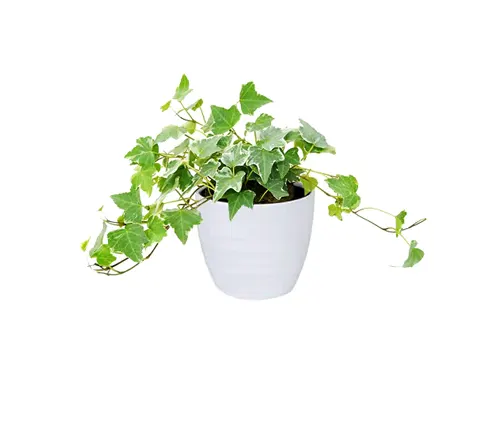
Consideration on Growing Office Plants
- Lighting
Understand the lighting conditions in your office space. Determine whether it receives ample natural light or if it’s predominantly lit with artificial lighting. Choose plants that match the available light levels; some plants thrive in low light conditions, while others require bright, indirect sunlight. - Space
Consider the available space for plants in your office. Determine whether you have ample floor space for larger plants or if you need to focus on smaller, desk-friendly options like succulents or small ferns. Additionally, consider the layout of your office to ensure that plants won’t obstruct walkways or work areas. - Temperature and Humidity
Evaluate the temperature and humidity levels in your office. Most indoor plants thrive in temperatures ranging from 65°F to 75°F (18°C to 24°C) and prefer moderate humidity. If your office has dry air due to air conditioning or heating systems, consider plants that can tolerate lower humidity levels or implement measures like misting or using a humidifier. - Maintenance Requirements
Assess the level of maintenance you can provide for your office plants. Choose plants that match your availability for watering, pruning, and general care. Some plants require regular watering and pruning, while others are more forgiving and can thrive with minimal attention. - Air Quality
Consider the air quality in your office space. Select plants that can help improve indoor air quality by filtering out common pollutants such as formaldehyde, benzene, and xylene. Plants like Peace Lilies, Spider Plants, and Snake Plants are known for their air-purifying properties. - Toxicity
Take into account the presence of pets or individuals with allergies in your office. Choose plants that are non-toxic to pets and safe for individuals with sensitivities or allergies. Plants like Boston Ferns, Spider Plants, and Bamboo Palms are considered safe options for households with pets. - Containers and Drainage
Select appropriate containers for your office plants with proper drainage to prevent waterlogging and root rot. Ensure that pots have drainage holes and use saucers to catch excess water. Consider the aesthetic appeal of containers and choose ones that complement your office decor. - Potential Pests and Diseases
Be vigilant for signs of pests or diseases that may affect your office plants. Monitor plants regularly for any signs of infestation or illness and take appropriate measures to prevent and treat them, such as pruning affected areas or using natural pest control methods.
Steps on Taking Care of Office Plants
Choose the Right Plants
Select plants that are well-suited to the office environment, considering factors such as lighting conditions, space availability, and maintenance requirements.
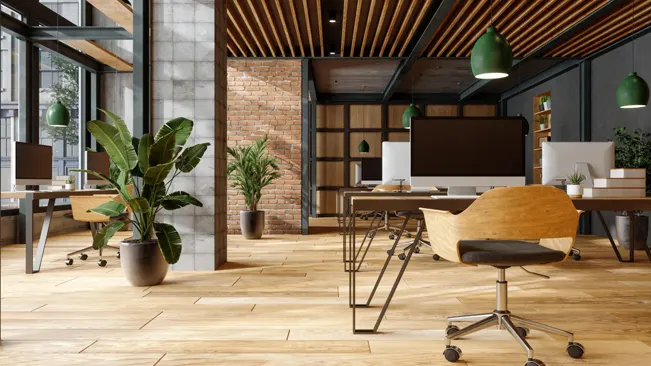
Provide Adequate Light
Place plants in areas with appropriate lighting levels according to their specific needs. Some plants thrive in low light conditions, while others require bright, indirect sunlight. Rotate plants periodically to ensure even exposure to light.
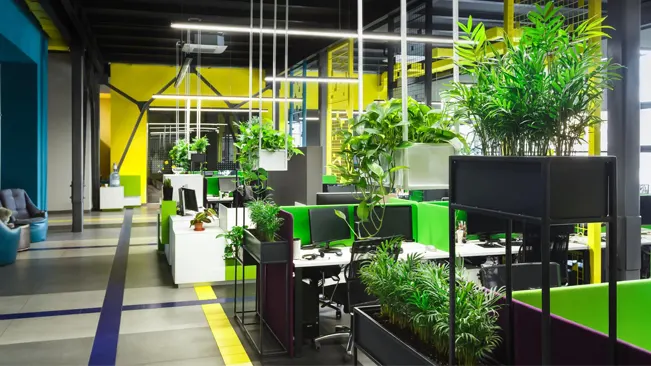
Water Regularly
Establish a consistent watering schedule based on the needs of each plant species. Avoid overwatering or underwatering by checking the soil moisture level before watering. Generally, it’s better to underwater than overwater, as excessive moisture can lead to root rot.
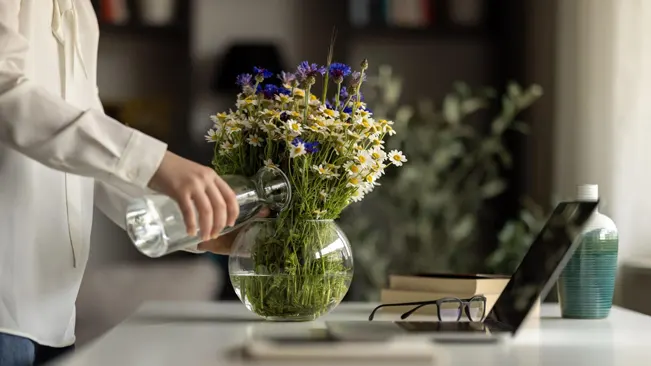
Monitor Humidity Levels
Indoor environments, especially those with air conditioning or heating systems, can have low humidity levels that may affect plant health. Increase humidity by misting plants with water or placing a tray of water with pebbles beneath them.

Fertilize as Needed
Supplement plant nutrition with occasional fertilization during the growing season, typically spring and summer. Use a balanced liquid fertilizer diluted to half strength to avoid overfeeding. Reduce or eliminate fertilization during the dormant season.
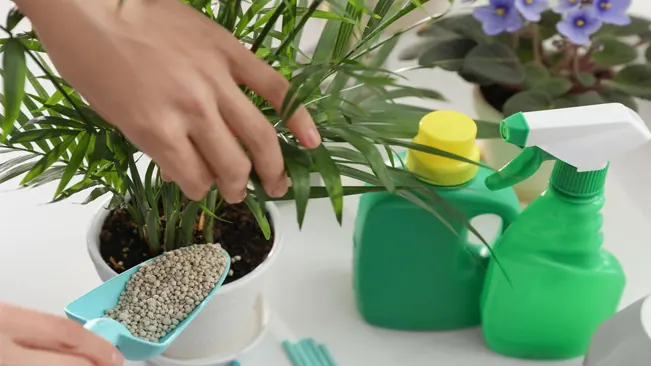
Prune and Trim
Regularly inspect plants for dead or yellowing leaves, spent flowers, and overcrowded growth. Prune and trim as necessary to promote healthy growth, maintain shape, and remove any diseased or damaged parts.
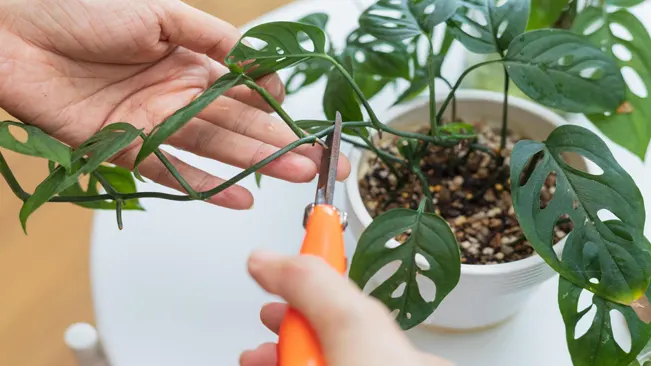
Dust Leaves
Keep plant leaves clean by gently wiping them with a damp cloth or sponge to remove dust and debris. This helps improve photosynthesis and prevents pests from infesting the plants.
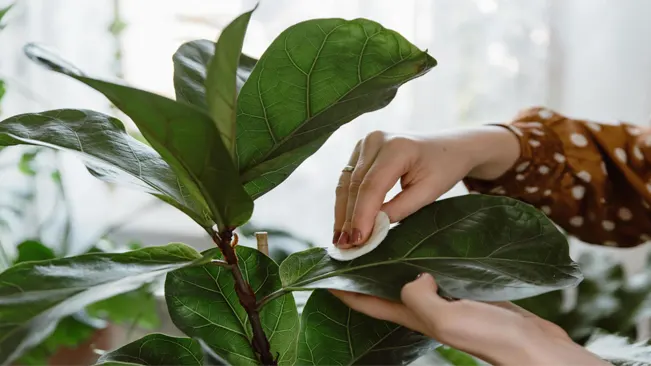
- Monitor for Pests and Diseases
Keep an eye out for signs of pests such as aphids, mealybugs, and spider mites, as well as symptoms of diseases such as mold, mildew, or fungal infections. Treat infestations promptly with insecticidal soap or neem oil, and remove affected parts if necessary. - Repot when Necessary
Monitor the growth of your plants and repot them into larger containers as needed to prevent root-bound conditions. Use a well-draining potting mix and ensure adequate drainage holes in the pots to prevent waterlogging. - Provide Support
Some plants may require support structures such as stakes or trellises to keep them upright as they grow. Install supports early to avoid damaging the roots or stems later on. - Rotate Plants
Rotate plants occasionally to ensure balanced growth and prevent them from leaning towards the light source. This also helps to promote even exposure to light and prevents overcrowding.
Office Plants Pros and Cons
Pros
- Improved Air Quality: Office plants help remove pollutants and toxins from the air, leading to cleaner and healthier indoor air for employees to breathe.
- Enhanced Aesthetic Appeal: Plants add visual interest and a sense of tranquility to the office environment, making it more inviting and pleasant for employees and visitors alike.
- Increased Productivity: Studies have shown that the presence of plants in the workplace can boost productivity, creativity, and overall job satisfaction among employees.
- Reduced Stress and Anxiety: Greenery has a calming effect on individuals and can help reduce stress levels, leading to a more relaxed and positive work environment.
- Noise Reduction: Some plants can help absorb sound and reduce background noise levels in the office, creating a quieter and more conducive work environment.
- Improved Well-being: Office plants have been linked to improved mood, mental health, and overall well-being among employees, leading to higher morale and job satisfaction.
- Temperature Regulation: Plants release moisture through transpiration, which can help regulate humidity levels and create a more comfortable indoor climate for employees.
- Cost-Effective Decor: Office plants offer a cost-effective way to enhance the decor of the workspace, providing a natural and refreshing element without the need for expensive renovations.
- Promotes Biophilic Design: Incorporating nature into the office environment through plants aligns with biophilic design principles, which aim to connect people with nature to improve overall well-being and productivity.
- Environmental Benefits: Growing plants in the office contributes to environmental sustainability by reducing carbon dioxide levels, conserving energy, and promoting a greener workplace culture.
Cons
- Maintenance Requirements: Office plants require regular care and maintenance, including watering, pruning, and pest control, which may add to the workload and responsibilities of employees or facility managers.
- Allergies and Sensitivities: Some individuals may be allergic to certain types of plants or pollen, which could trigger allergic reactions or respiratory issues in the office environment.
- Potential Pest Problems: Indoor plants can attract pests such as aphids, spider mites, and fungus gnats, which may require pest control measures to prevent infestations and damage to the plants.
- Space Limitations: Office plants require space to grow and thrive, which may be limited in smaller or crowded workspaces, leading to overcrowding or obstruction of walkways and work areas.
- Water Damage Risk: Overwatering or improper drainage can lead to water damage to floors, carpets, and furniture, especially in offices with carpeted or wooden floors.
- Lighting Constraints: Not all office spaces have adequate natural light for plant growth, which may limit the types of plants that can thrive in the environment or require the use of artificial lighting solutions.
- Seasonal Changes: Some office plants may exhibit seasonal changes in growth or flowering patterns, requiring adjustments in care and maintenance throughout the year.
- Potential Mess: Dropping leaves, soil spillage, and occasional pest infestations can create messiness and require regular cleaning to maintain a tidy and professional-looking workspace.
- Cost of Maintenance: The cost of purchasing, maintaining, and replacing office plants, as well as associated supplies such as pots, soil, and fertilizers, can add up over time and may require budget allocation.
- Employee Preferences: Individual preferences for plant species, placement, and care routines may vary among employees, requiring compromise and coordination to ensure a harmonious and inclusive office environment.
Conclusion
Overall, incorporating plants into the office environment can have a multitude of benefits for both employees and employers, ranging from improved air quality and productivity to enhanced well-being and creativity. By creating a green and thriving workspace, organizations can cultivate a more positive and conducive work environment for their employees.
FAQs (Frequently Asked Questions)
- What are the best office plants for low light conditions?
Snake plants, ZZ plants, and Pothos are excellent choices for offices with limited natural light as they can thrive in low light conditions. - Which office plants are easiest to care for?
Some of the easiest-to-care-for office plants include Snake plants, ZZ plants, and Spider plants, as they require minimal maintenance and can tolerate neglect. - What office plants are safe for pets?
Pet-friendly office plants include Spider plants, Boston ferns, and Areca palms, as they are non-toxic to cats and dogs. - How often should I water my office plants?
The frequency of watering depends on factors such as plant species, pot size, and environmental conditions. Generally, it’s best to water office plants when the top inch of soil feels dry to the touch. - What are some air-purifying office plants?
Peace lilies, Snake plants, and Spider plants are known for their air-purifying properties and can help improve indoor air quality in the office. - Can I grow herbs or edible plants in my office?
Yes, herbs like basil, mint, and parsley, as well as small edible plants like cherry tomatoes and peppers, can be grown in office environments with adequate light and care. - How do I prevent pests from infesting my office plants?
To prevent pests such as aphids and spider mites, regularly inspect plants for signs of infestation, keep the foliage clean, and avoid overwatering. Treat infestations promptly with natural remedies or insecticidal soap. - What are the best hanging plants for office spaces?
Pothos, Spider plants, and String of Pearls are popular choices for hanging planters in office spaces due to their trailing growth habit and low maintenance requirements. - How do I know if my office plant needs repotting?
Signs that a plant needs repotting include roots emerging from drainage holes, slowed growth, and water draining too quickly from the pot. Repot when the plant becomes root-bound or outgrows its current container. - Can I grow office plants from cuttings?
Yes, many office plants can be propagated from cuttings. Simply take a healthy stem cutting, remove lower leaves, and place it in water or moist potting mix until roots develop. Examples include Pothos, Spider plants, and Philodendrons.

Kristine Moore
Forestry AuthorI'm Kristine Moore, a seasoned garden landscaping professional with over 30 years of experience. My extensive career has been dedicated to transforming outdoor spaces into stunning, sustainable landscapes. With a deep understanding of horticulture, design principles, and environmental stewardship, I have become a respected figure in the field, known for creating harmonious, visually appealing, and eco-friendly gardens. My commitment to excellence and continuous learning in landscaping trends and techniques has solidified my reputation as an expert in garden design and implementation.













Leave your comment